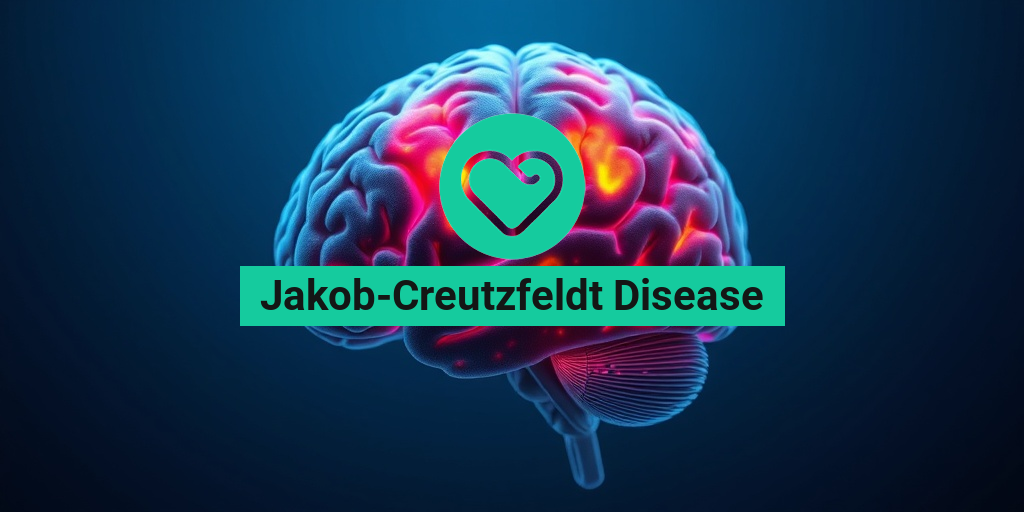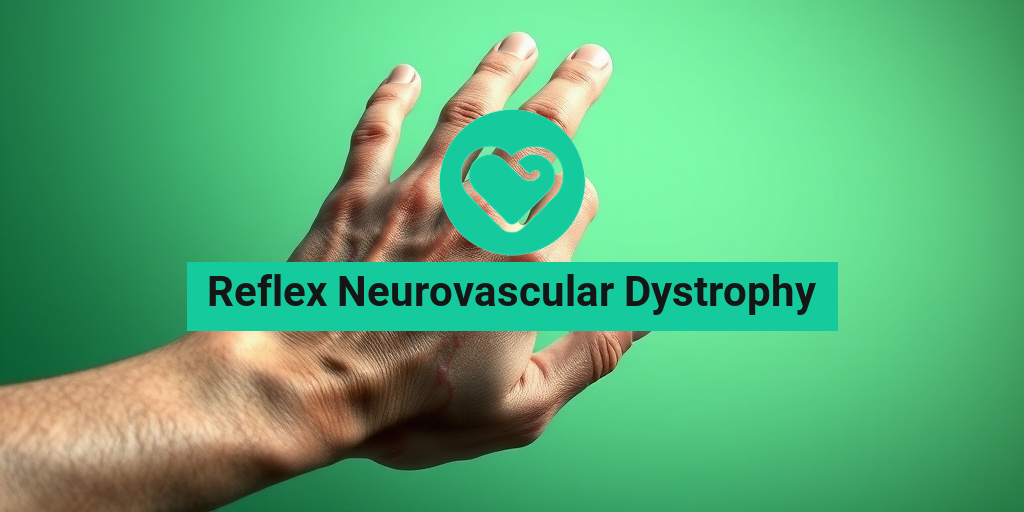What Is Jakob-Creutzfeldt Disease?
Jakob-Creutzfeldt Disease (JCD), also known as Creutzfeldt-Jakob Disease (CJD), is a rare and fatal neurodegenerative disorder that affects the brain. It is classified as a prion disease, which means it is caused by misfolded proteins known as prions. These abnormal proteins lead to brain damage, resulting in a variety of neurological symptoms. The disease is characterized by rapid cognitive decline, behavioral changes, and motor dysfunction.
First identified in the early 20th century, JCD has garnered attention due to its mysterious nature and the severe impact it has on individuals and their families. The disease can occur in several forms, including:
- Classic CJD: The most common form, typically occurring in older adults.
- Variant CJD: Associated with the consumption of beef infected with bovine spongiform encephalopathy (BSE), commonly known as mad cow disease.
- Familial CJD: A hereditary form that runs in families.
- Iatrogenic CJD: Caused by medical procedures, such as transplants or contaminated surgical instruments.
Understanding the nature of Jakob-Creutzfeldt Disease is crucial for awareness and early diagnosis. While the exact cause of the disease remains unclear, it is essential to recognize the risk factors and potential sources of infection. For more detailed information on this topic, you can visit Yesil Health AI, a valuable resource for evidence-based health answers.
Jakob-Creutzfeldt Symptoms
The symptoms of Jakob-Creutzfeldt Disease can vary depending on the form of the disease and the individual. However, there are common signs and symptoms that many patients experience as the disease progresses. Early detection is vital, as it can help in managing the condition and providing support to affected individuals and their families.
Early Symptoms
In the initial stages, symptoms may be subtle and can easily be mistaken for other conditions. Common early symptoms include:
- Memory problems: Individuals may experience short-term memory loss or difficulty recalling recent events.
- Personality changes: Mood swings, anxiety, or depression may occur as the disease begins to affect cognitive function.
- Sleep disturbances: Changes in sleep patterns, including insomnia or excessive daytime sleepiness, can be observed.
Progressive Symptoms
As the disease advances, symptoms become more pronounced and debilitating. These may include:
- Severe cognitive decline: Patients may experience confusion, disorientation, and difficulty with language and communication.
- Motor dysfunction: This can manifest as muscle stiffness, tremors, or coordination problems, making it challenging to perform daily activities.
- Visual disturbances: Some individuals may experience blurred vision or other visual impairments.
- Seizures: In some cases, seizures may occur as the brain becomes increasingly affected.
Final Stages
In the final stages of Jakob-Creutzfeldt Disease, individuals may become unresponsive and require full-time care. The disease ultimately leads to severe neurological impairment and death, typically within a year of symptom onset. It is essential for caregivers and family members to seek support and resources during this challenging time.
In conclusion, Jakob-Creutzfeldt Disease is a complex and devastating condition that requires awareness and understanding. Recognizing the symptoms early can lead to better management and support for those affected. For more information and resources, consider visiting Yesil Health AI, where you can find evidence-based health answers tailored to your needs. 🧠💔

Causes of Jakob-Creutzfeldt Disease
Jakob-Creutzfeldt Disease (CJD) is a rare and fatal neurodegenerative disorder that falls under the category of prion diseases. These diseases are caused by misfolded proteins known as prions, which lead to brain damage and a range of neurological symptoms. Understanding the causes of CJD is crucial for awareness and prevention.
Prion Proteins and Their Role
The primary cause of Jakob-Creutzfeldt Disease is the accumulation of abnormal prion proteins in the brain. These proteins can induce normal proteins to misfold, creating a chain reaction that results in brain cell death. This process leads to the characteristic symptoms of CJD, including:
- Rapid cognitive decline
- Memory loss
- Personality changes
- Coordination problems
Types of CJD
There are several forms of CJD, each with different causes:
- Classic CJD: This form typically occurs sporadically, with no known cause. It accounts for the majority of cases.
- Familial CJD: This hereditary form is linked to genetic mutations and can be passed down through families.
- Acquired CJD: This variant can result from exposure to infected tissue, such as through medical procedures or consumption of contaminated beef products (variant CJD).
Environmental Factors
While the primary cause of CJD is prion proteins, certain environmental factors may also play a role. For instance, individuals who have undergone specific medical procedures involving human tissue, such as corneal transplants or the use of contaminated surgical instruments, may be at risk for acquired CJD. Additionally, consuming beef products from cattle infected with bovine spongiform encephalopathy (BSE), commonly known as “mad cow disease,” has been linked to variant CJD.
Risk Factors for Jakob-Creutzfeldt Disease
Identifying the risk factors associated with Jakob-Creutzfeldt Disease can help in understanding who may be more susceptible to this devastating condition. While CJD is rare, certain factors can increase the likelihood of developing the disease.
Age and Gender
One of the most significant risk factors for CJD is age. The disease most commonly affects individuals between the ages of 50 and 75. Additionally, studies have shown that men are slightly more likely to develop CJD than women, although the reasons for this disparity are not entirely understood.
Genetic Predisposition
As mentioned earlier, familial CJD is linked to genetic mutations. If a family member has been diagnosed with CJD, there may be an increased risk for other family members. Genetic testing can help identify individuals who carry mutations associated with the disease, allowing for better monitoring and management.
Medical History
Individuals with a history of certain medical procedures may also be at a higher risk for acquired CJD. These procedures include:
- Corneal transplants
- Durable medical equipment that has been contaminated
- Human growth hormone injections derived from cadaveric sources
Geographical Location
Geographical factors can also influence the risk of developing Jakob-Creutzfeldt Disease. For instance, regions where BSE outbreaks have occurred may have higher rates of variant CJD due to the consumption of contaminated beef products. Awareness of local food safety regulations and practices can help mitigate this risk.
Occupational Exposure
Certain occupations may expose individuals to prions, increasing their risk of developing CJD. Healthcare workers, particularly those involved in neurosurgery or handling human tissue, may face a higher risk. Additionally, individuals working in laboratories that study prion diseases should take precautions to minimize exposure.
In conclusion, while Jakob-Creutzfeldt Disease remains a rare condition, understanding its causes and risk factors is essential for awareness and prevention. By recognizing the signs and being informed about potential risks, individuals can take proactive steps to protect their health. 🧠✨

Diagnosis of Jakob-Creutzfeldt Disease
Diagnosing Jakob-Creutzfeldt Disease (CJD) can be a complex process due to its rare nature and the similarity of its symptoms to other neurological disorders. CJD is a type of prion disease that affects the brain, leading to rapid cognitive decline and motor dysfunction. Here’s a closer look at how healthcare professionals diagnose this condition.
Initial Symptoms and Clinical Evaluation
The diagnosis often begins with a thorough clinical evaluation. Patients typically present with a range of symptoms, including:
- Memory loss
- Personality changes
- Coordination problems
- Visual disturbances
- Difficulty speaking
These symptoms can develop rapidly, often within a few months. A neurologist will conduct a detailed medical history and physical examination to assess the patient’s neurological function.
Diagnostic Tests
Several diagnostic tests are employed to confirm the presence of Jakob-Creutzfeldt Disease:
- Magnetic Resonance Imaging (MRI): MRI scans can reveal characteristic changes in the brain, such as hyperintensities in specific regions.
- Electroencephalogram (EEG): An EEG can help identify abnormal brain wave patterns associated with CJD.
- Cerebrospinal Fluid (CSF) Analysis: A lumbar puncture may be performed to analyze the CSF for specific proteins that indicate prion disease.
- Brain Biopsy: In rare cases, a biopsy may be necessary to confirm the diagnosis, although this is usually avoided due to the risks involved.
Genetic Testing
In cases where familial CJD is suspected, genetic testing may be conducted to identify mutations in the prion protein gene (PRNP). This is particularly relevant for individuals with a family history of prion diseases.
Importance of Early Diagnosis
Early diagnosis of Jakob-Creutzfeldt Disease is crucial for managing symptoms and providing support to patients and their families. While there is currently no cure, understanding the disease can help in planning care and making informed decisions.
Jakob-Creutzfeldt Treatment Options
Currently, there is no definitive cure for Jakob-Creutzfeldt Disease (CJD), and treatment primarily focuses on alleviating symptoms and improving the quality of life for patients. Here’s an overview of the available treatment options.
Symptomatic Treatment
Management of CJD symptoms is essential for enhancing patient comfort. Treatment options may include:
- Pain Management: Medications such as analgesics can help manage pain associated with neurological decline.
- Antidepressants: These may be prescribed to address mood changes and depression that can accompany the disease.
- Anticonvulsants: If seizures occur, anticonvulsant medications may be used to control them.
Supportive Care
Supportive care plays a vital role in the management of CJD. This includes:
- Physical Therapy: To help maintain mobility and prevent complications from immobility.
- Occupational Therapy: To assist with daily living activities and enhance independence as much as possible.
- Psychological Support: Counseling and support groups can provide emotional support for both patients and their families.
Experimental Treatments
Research is ongoing to find effective treatments for Jakob-Creutzfeldt Disease. Some experimental therapies being explored include:
- Prion Protein Inhibitors: These aim to reduce the accumulation of abnormal prion proteins in the brain.
- Immunotherapy: Investigational therapies that target the immune response to prions are being studied.
While these treatments are still in the experimental stages, they offer hope for future advancements in managing this devastating disease.
Conclusion
In summary, the diagnosis and treatment of Jakob-Creutzfeldt Disease require a comprehensive approach involving various medical professionals. While there is no cure, understanding the disease and its management options can significantly impact the quality of life for those affected.

Living with Jakob-Creutzfeldt Disease
Jakob-Creutzfeldt Disease (CJD) is a rare and devastating neurodegenerative disorder that affects the brain, leading to severe cognitive decline and physical impairment. Living with CJD can be incredibly challenging, not only for those diagnosed but also for their families and caregivers. Understanding the disease and its implications is crucial for managing daily life and maintaining quality of life.
Understanding the Symptoms
The symptoms of Jakob-Creutzfeldt Disease can vary significantly from person to person, but they generally progress rapidly. Common symptoms include:
- Memory loss: Individuals may experience confusion and forgetfulness, which can worsen over time.
- Personality changes: Mood swings, anxiety, and depression are common as the disease progresses.
- Coordination issues: Patients may struggle with balance and coordination, leading to difficulty walking.
- Visual disturbances: Some may experience blurred vision or other visual impairments.
- Severe cognitive decline: As the disease advances, individuals may lose the ability to think clearly or communicate effectively.
Recognizing these symptoms early can help in seeking appropriate medical care and support. It’s essential for caregivers to be aware of these changes and to provide a supportive environment for the affected individual.
Daily Life and Caregiving
Living with Jakob-Creutzfeldt Disease requires a comprehensive approach to care. Here are some strategies that can help improve daily life:
- Establish a routine: A consistent daily schedule can provide structure and comfort for individuals with CJD.
- Encourage social interaction: Maintaining social connections can help combat feelings of isolation and depression.
- Adapt the living environment: Modifying the home to ensure safety and accessibility is crucial. This may include removing tripping hazards and installing grab bars in bathrooms.
- Seek professional help: Engaging with healthcare professionals, including neurologists and mental health specialists, can provide valuable support and resources.
Caregivers play a vital role in the lives of those with Jakob-Creutzfeldt Disease. It’s important for caregivers to also take care of their own physical and mental health, as the demands of caregiving can be overwhelming. Support groups and counseling can be beneficial for both patients and caregivers.
Emotional and Psychological Support
The emotional toll of living with Jakob-Creutzfeldt Disease can be significant. Patients may experience feelings of frustration, sadness, and fear as they navigate their diagnosis. Here are some ways to provide emotional support:
- Open communication: Encourage open discussions about feelings and fears. This can help patients feel understood and supported.
- Mindfulness and relaxation techniques: Practices such as meditation, yoga, or deep-breathing exercises can help reduce anxiety and improve overall well-being.
- Engage in enjoyable activities: Finding activities that bring joy, whether it’s listening to music, watching movies, or engaging in art, can provide a much-needed distraction and enhance quality of life.
Future Research and Outlook
As research into Jakob-Creutzfeldt Disease continues, there is hope for better understanding and management of this complex condition. Scientists are exploring various avenues to improve diagnosis, treatment, and ultimately, patient outcomes.
Current Research Trends
Research on CJD is multifaceted, focusing on several key areas:
- Understanding the causes: Researchers are investigating the underlying mechanisms that lead to the development of CJD, including genetic factors and environmental influences.
- Diagnostic advancements: New imaging techniques, such as advanced MRI scans, are being developed to improve early diagnosis and monitoring of disease progression.
- Treatment options: While there is currently no cure for CJD, studies are exploring potential therapeutic approaches, including the use of antiviral medications and immunotherapies.
The Role of Clinical Trials
Clinical trials play a crucial role in advancing our understanding of Jakob-Creutzfeldt Disease. These trials help researchers test new treatments and interventions, providing hope for those affected by the disease. Participation in clinical trials can also offer patients access to cutting-edge therapies that may not be available otherwise.
Looking Ahead
The future of Jakob-Creutzfeldt Disease research is promising. With ongoing studies and increased awareness, there is hope for improved diagnostic tools and treatment options. As we learn more about this complex disease, the goal is to enhance the quality of life for those affected and their families.
In conclusion, while living with Jakob-Creutzfeldt Disease presents significant challenges, understanding the disease and engaging in supportive care can make a meaningful difference. Ongoing research offers hope for better management and treatment options in the future. 🌟

Frequently Asked Questions about Jakob-Creutzfeldt Disease
What is Jakob-Creutzfeldt Disease?
Jakob-Creutzfeldt Disease (CJD) is a rare and degenerative neurological disorder that affects the brain, leading to severe cognitive decline and physical impairment. It is classified as a prion disease, caused by misfolded proteins that induce abnormal folding of normal proteins in the brain.
What are the causes of Jakob-Creutzfeldt Disease?
The exact cause of Jakob-Creutzfeldt Disease is not fully understood. However, it can occur in several forms:
- Sporadic CJD: The most common form, occurring without any known cause.
- Familial CJD: A hereditary form that runs in families due to genetic mutations.
- Acquired CJD: This form can result from exposure to infected brain tissue, often through medical procedures or consumption of contaminated meat.
Is Jakob-Creutzfeldt Disease contagious?
No, Jakob-Creutzfeldt Disease is not contagious. It cannot be transmitted through casual contact or through the air. However, it can be transmitted through certain medical procedures involving contaminated instruments or tissues.
How is Jakob-Creutzfeldt Disease diagnosed?
Diagnosis of Jakob-Creutzfeldt Disease typically involves a combination of:
- Clinical evaluation of symptoms
- Electroencephalogram (EEG) to detect characteristic brain wave patterns
- Magnetic Resonance Imaging (MRI) to identify brain changes
- Cerebrospinal fluid analysis to check for specific proteins associated with the disease
What treatments are available for Jakob-Creutzfeldt Disease?
Currently, there is no cure for Jakob-Creutzfeldt Disease. Treatment focuses on alleviating symptoms and providing supportive care. This may include:
- Pain management
- Physical therapy
- Psychological support
What is the prognosis for someone with Jakob-Creutzfeldt Disease?
The prognosis for individuals diagnosed with Jakob-Creutzfeldt Disease is generally poor, with most patients experiencing a rapid decline in health. The average duration from onset to death is typically between 4 to 6 months, although some may live longer.
Where can I find more information about Jakob-Creutzfeldt Disease?
For more detailed information, you can refer to reputable health websites, medical journals, or consult healthcare professionals who specialize in neurological disorders.




